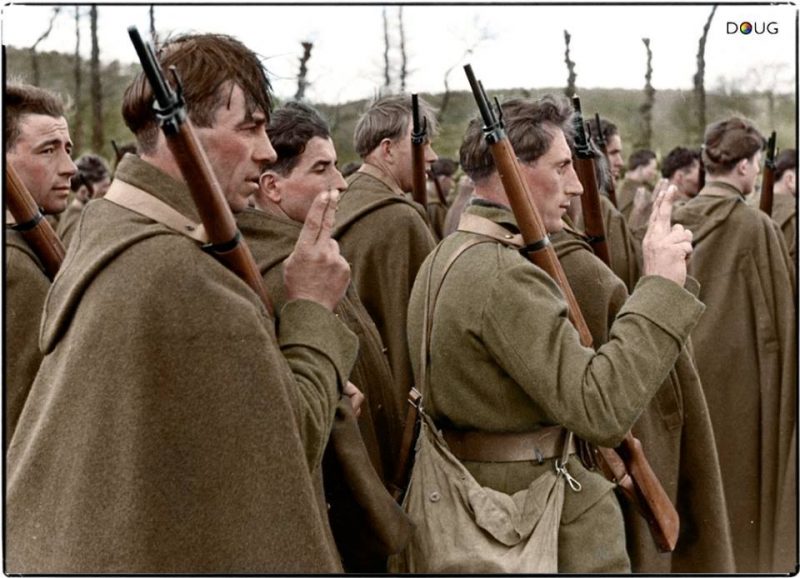- Joined
- Apr 2, 2017
- Messages
- 38,214
- Points
- 463
Colourisation by Royston Leonard from Cardiff, Wales

A wounded US paratrooper grimaces in pain while waiting for medical evacuation at base camp in the A Shau Valley near the Laos border in South Vietnam during the Vietnam War, May 19 1969

US machine gunner Specialist James R Pointer, left, of Cedartown, Georgia, and Private First Class Herald Spracklen of Effingham, Illinois, peer from the brush of an overgrown rubber plantation near the Special Forces camp at Bu Dop during a half hour firefight, Dec. 5, 1967. Their company-size patrol avoided an ambush when a patrol dog alerted the unit to the presence of enemy forces

An American soldier wears a hand lettered War Is Hell slogan on his helmet in Vietnam, 1965

soldiers making their way through the country's dense woodland

Hovering US Army helicopters pour machine-gun fire into the tree line to cover the advance of South Vietnamese ground troops as they attack a North Vietnamese army camp eighteen miles north of Tay Ninh, near the Cambodian border, March 1965
A wounded US paratrooper grimaces in pain while waiting for medical evacuation at base camp in the A Shau Valley near the Laos border in South Vietnam during the Vietnam War, May 19 1969
US machine gunner Specialist James R Pointer, left, of Cedartown, Georgia, and Private First Class Herald Spracklen of Effingham, Illinois, peer from the brush of an overgrown rubber plantation near the Special Forces camp at Bu Dop during a half hour firefight, Dec. 5, 1967. Their company-size patrol avoided an ambush when a patrol dog alerted the unit to the presence of enemy forces
An American soldier wears a hand lettered War Is Hell slogan on his helmet in Vietnam, 1965
soldiers making their way through the country's dense woodland
Hovering US Army helicopters pour machine-gun fire into the tree line to cover the advance of South Vietnamese ground troops as they attack a North Vietnamese army camp eighteen miles north of Tay Ninh, near the Cambodian border, March 1965










